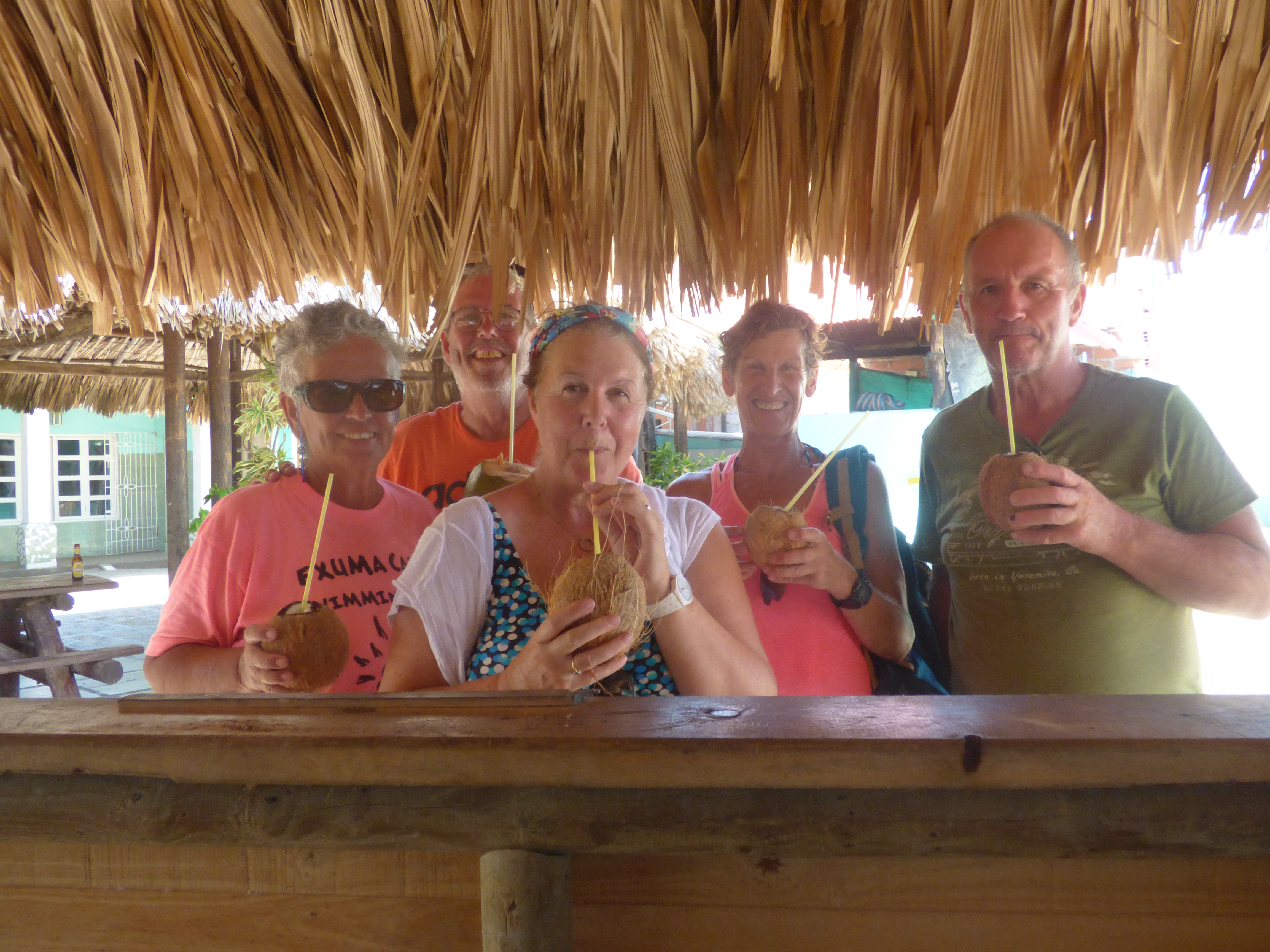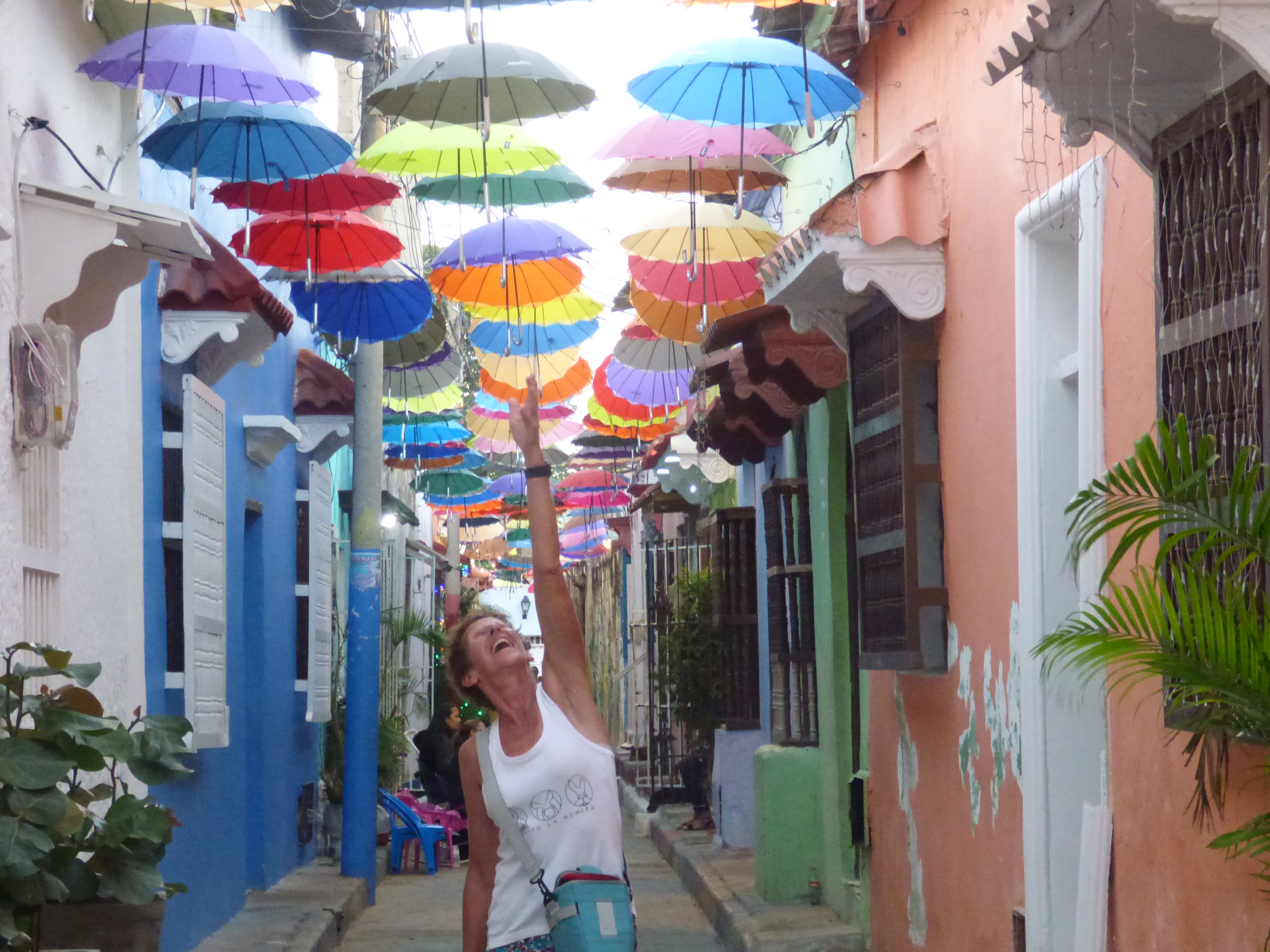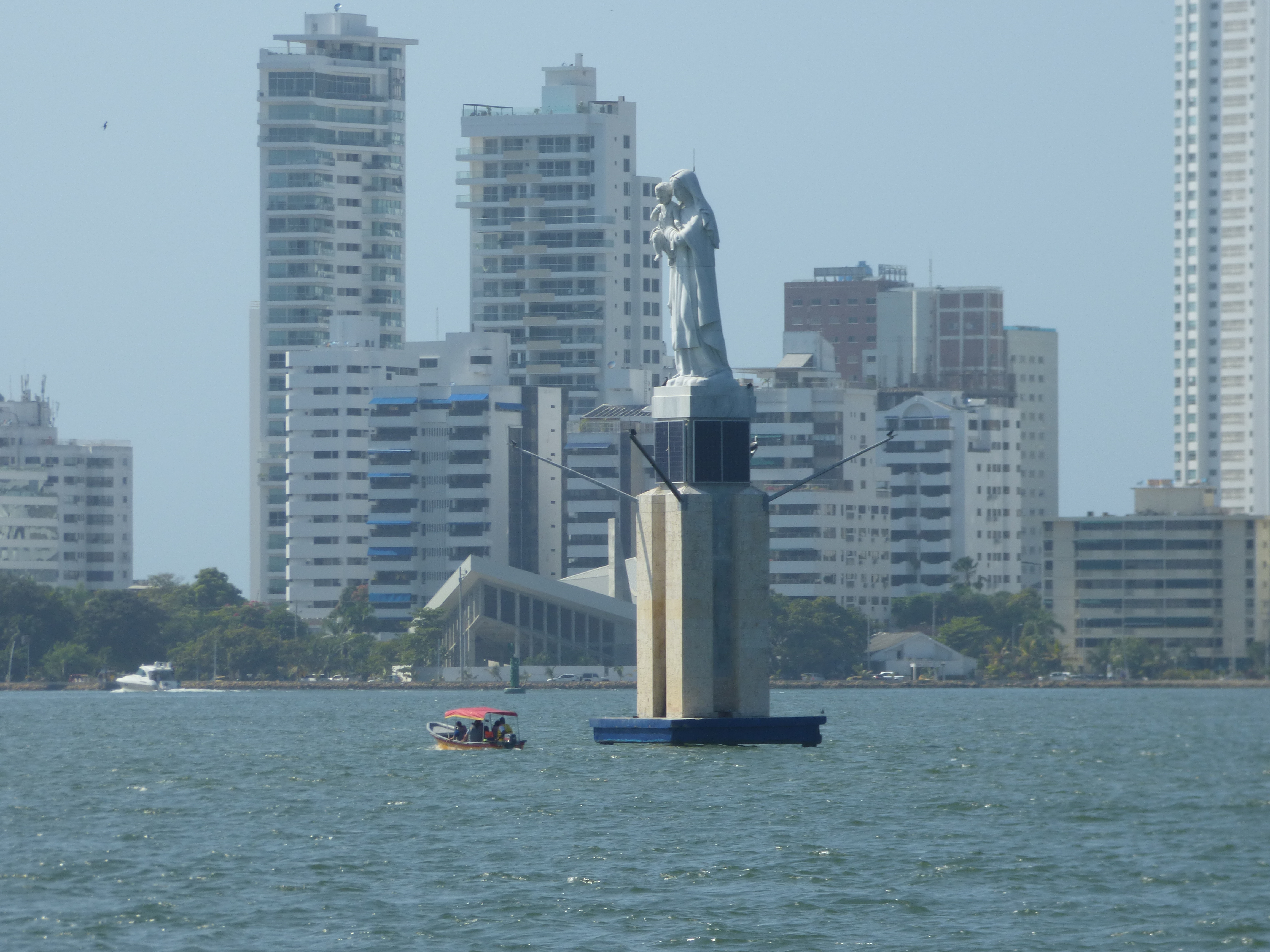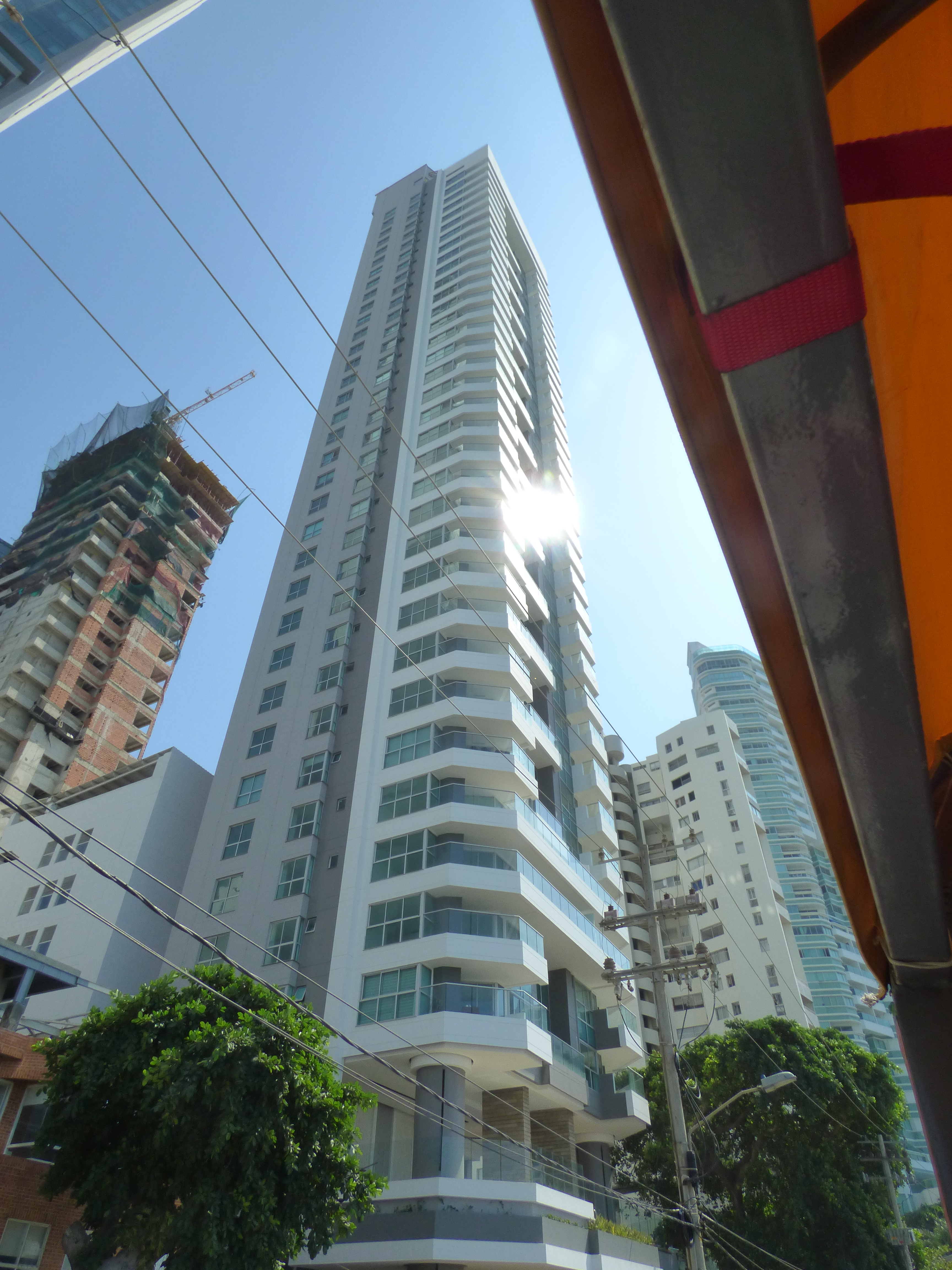A short run of only 14nm from Isla Pinos took us to Ustupu, where the town is a series of six bridged linked islands around 600 metres off the coast and home to a population of approx 2,500 Guna. Incredibly, an airstrip is bridged between two of the islands!

It’s mostly a fishing village and we were lucky to arrive as the island was preparing for a celebration of 94 years of independence to be held in March. We went ashore in the mid afternoon, paid our landing fee of US$15 and enjoyed a meal of chicken, rice and lentils, plus beer. Our mission for the afternoon was to find a hairdresser for us ladies!

During our walk through the village we met the Saila, the island’s chief, who asked if we would be kind enough to donate towards the celebration, of course we would! Marching practice was in action as we arrived, with older men keeping the young lads in line and encouraging their singing around a statue of the Leader of the 1925 San Blas or Kuna revolution, Nele Kantule, who was buried on the island.


Success in finding a hairdresser! It’s ok for the men, a quick run through with razors and they’re done, usually courtesy of their wives. getting your haircut is something you normally take for granted and easily achieved. Not so when you’re sailing. There’s a few options for women sailors, a) grow it b)get your husband to cut it, risky, or c) look like a madwoman till you find any kind of hairdresser and hope you both understand each other! We were fortunate on Ustupu. By asking around, we found Nick, a hairdresser who spoke good English. Myself, Ute s/v Schloss Ort and Grace s/v Pisces booked ourselves in at separate times for the following morning. I was 10am.
Terry, Carole and I went ashore in the morning and found Nick’s house. In the yard swinging in a hammock was his sister who fetched a chair for me to sit in. Carole, and Nick’s sister watched as Nick swung a cape around me. I quickly saw hair dropping into my lap. I asked him where did he learn to be a hairdresser? “In Panama, I worked for the Panamanian Military, cutting soldiers hair. Now I cut the hair of the boys in the village before they start their school terms.” I looked at Carole, she gave me a tentative thumb up on the style. I could feel the noseeums, tiny, tiny biting insects attacking my ankles. I had become relatively used to them, however Carole had not yet become immune to their ferocious nipping. She was trying to be polite in scratching her ankles, but you can’t beat a good scratch! Nick went on to say that 70% of the island’s youngsters leave Ustupu for Panama. They go to school here, but leave for the mainland to attend college and university. He had been married here for five years. Apparently, if you just hold hands and kiss you have to get married! Traditionally the husband moves in with the wife’s family and take their name. But his marriage did not work out so he left for Panama for a few years. Now he had returned, living back in the village happily and cutting hair. Nick announced he was finished! I looked in the small mirror he handed to me. Wow! I remembered he said he cut the hair of the Panamanian military, my cut was short, as I asked, and precision cut. I thanked and paid him. Carole and I had enjoyed a really fascinating experience, learnt so much and that haircut lasted me for over 4 months! Later I met up with Ute and Grace after their haircuts. We three had exactly the same cut! Must say, it really suited us too!

Yet more surprises! Ustupu has a few very basic shops, which seemed to sell the same things, tins of beans, cornflakes, coffee, fabric and thread for Molas (see my earlier blog on Molas) and several bakeries which sell bread and best of all a type of sweet, moist cake sponge with red food colouring swirled through it. It was divine!

A form of volleyball game was going on. Ken s/v Pisces couldn’t resist joining in. He was cheered on in the game and given a round of applause as exhausted, he left the youngsters to it!

Carole, Terry and I walked over the bridges into a different village on the island. We got chatting to some of the children on one of the bridges, showing them our Guna word book, they were fascinated, pointing to words and pronouncing them correctly for us.

We took several photos on our walk. We were approached by the village Saila, and asked to attend the office where other officials were present. The Saila sat at a long table and we wondered what we had done wrong. We were quite anxious. The Saila silently thumbed through a large bound folder on the table, we waited patiently. A young albino lad approached us and in excellent English he gently advised us that photographs are not allowed in this village and we would be fined. We apologised profusely to him and Saila. We sat and waited to hear at what our fine would be. The albino lad gave us a look of “I’m sorry to have to do this” and announced our fine would be ……US$5. Phew, what a relief. We apologised and gladly paid our fine. The Saila, albino and officials all broke into the biggest smiles and greeted us warmly. The Saila closed his folder, and we all filed out of the long hut. Their duty was done, now we could all be friends and the mood instantly lightened back to their normal way of approaching life. It was bizarre, but we respected their rules and didn’t take any more photos whilst on that part of the island!
I am not being rude in calling the gentle official in this village an albino. The Kuna indians have the world’s highest rate of albinism. They are also called Moon Children, playing a central role in Kuna/Guna mythology and revered to have special powers. Loved, highly respected, they often hold positions such as doctors, shamans, leaders and in this village, revered as highly as the Saila.


Travel broadens your mind, and our stay here had certainly achieved that. We walked back to the main village, stocked up on cake and watched the activity at the quayside. Tiny women at the quayside were hefting big sacks of grain and beans onto their shoulders as if they were feather pillows and carrying them back home.
















































































































